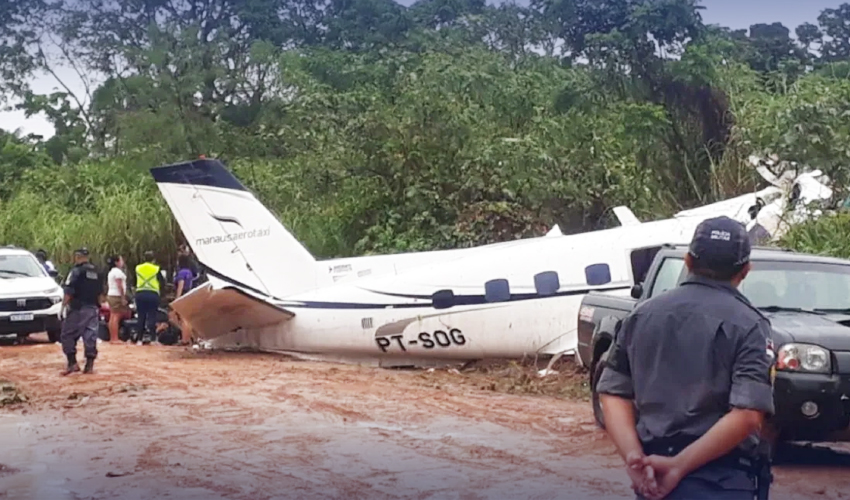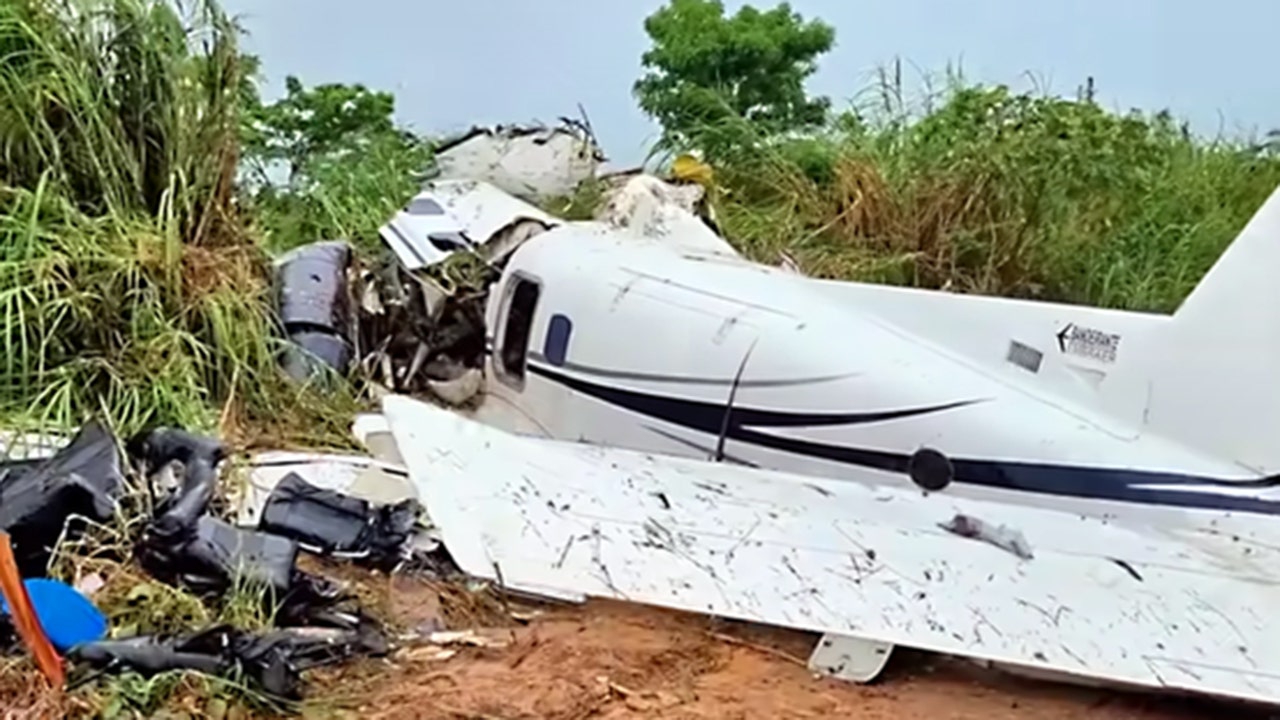History of Plane Crashes in Brazil

Brazil has a long and unfortunate history of plane crashes, with numerous incidents impacting the country’s aviation industry and public perception. From the early days of commercial aviation to more recent tragedies, these crashes have prompted investigations, safety improvements, and a renewed focus on aviation safety.
Timeline of Major Plane Crashes
The following timeline Artikels some of the most significant plane crashes in Brazil, highlighting the impact of these events on the country’s aviation history.
- 1950: Cruzeiro do Sul Flight 757: This crash, which occurred near the city of São Paulo, claimed the lives of 30 passengers and crew members. It was one of the first major plane crashes in Brazil and contributed to the early development of aviation safety regulations in the country.
- 1961: Varig Flight 831: This flight, which departed from Rio de Janeiro and was destined for Paris, crashed in the Atlantic Ocean, resulting in the deaths of all 58 people on board. This tragedy highlighted the importance of proper maintenance and operational procedures in commercial aviation.
- 1973: Varig Flight 820: This crash, which occurred in Paris, France, killed 123 people. The accident was attributed to a combination of factors, including pilot error and mechanical failure.
- 1982: Transbrasil Flight 402: This crash, which occurred near the city of Belém, resulted in the deaths of 137 people. The accident was attributed to pilot error and a lack of proper communication between the crew and air traffic control.
- 1989: TAM Airlines Flight 402: This flight, which departed from São Paulo and was destined for Manaus, crashed near the city of Manaus, killing all 141 people on board. The accident was attributed to a combination of factors, including pilot error, mechanical failure, and weather conditions.
- 2006: Gol Transportes Aéreos Flight 1907: This crash, which occurred near the city of Mato Grosso, resulted in the deaths of 154 people. The accident was attributed to a mid-air collision with a private aircraft.
- 2007: TAM Airlines Flight 3054: This crash, which occurred at São Paulo-Congonhas Airport, resulted in the deaths of 199 people. The accident was attributed to pilot error and runway conditions.
Impact on Aviation Safety Regulations and Public Perception
These crashes have had a profound impact on aviation safety regulations in Brazil, leading to a series of reforms and improvements aimed at preventing similar tragedies.
- Increased Safety Standards: Following major crashes, Brazilian aviation authorities have implemented stricter safety standards, including improved pilot training, aircraft maintenance procedures, and air traffic control systems.
- Improved Communication and Coordination: The accidents have also highlighted the importance of communication and coordination between airlines, airports, and regulatory agencies. These efforts have resulted in better information sharing and a more collaborative approach to aviation safety.
- Public Awareness: Plane crashes have also had a significant impact on public perception of aviation safety. These tragedies have led to increased awareness of the risks associated with air travel and a greater demand for transparency and accountability from the aviation industry.
Role of Human Error, Mechanical Failure, and Environmental Factors
Plane crashes in Brazil, like those in other parts of the world, are often attributed to a combination of factors, including human error, mechanical failure, and environmental conditions.
- Human Error: Pilot error, including fatigue, poor judgment, and inadequate training, has been a contributing factor in a number of plane crashes in Brazil.
- Mechanical Failure: Mechanical failures, such as engine malfunctions, structural defects, and faulty equipment, have also played a role in some crashes.
- Environmental Factors: Environmental factors, such as weather conditions, terrain, and wildlife strikes, can also contribute to plane crashes.
Types of Plane Crashes in Brazil: Brazil Plane Crash Type

Brazil, a vast country with a robust aviation industry, has unfortunately witnessed its share of plane crashes throughout history. While the causes of these crashes are complex and multifaceted, they can be broadly categorized into several distinct types, each with its unique contributing factors. Understanding these categories is crucial for identifying potential risks and implementing measures to improve aviation safety in Brazil.
Mid-Air Collisions
Mid-air collisions are a rare but extremely dangerous type of plane crash that occurs when two or more aircraft collide in flight. In Brazil, such incidents have been relatively infrequent, but their impact can be devastating. These collisions are often attributed to a combination of factors, including:
- Air Traffic Control Errors: Miscommunication or lapses in air traffic control procedures can lead to aircraft being directed into the same airspace, increasing the risk of a collision.
- Pilot Error: Pilots failing to maintain proper separation from other aircraft, neglecting to follow air traffic control instructions, or experiencing a loss of situational awareness can contribute to mid-air collisions.
- Weather Conditions: Reduced visibility due to fog, heavy rain, or thunderstorms can impair pilots’ ability to see and avoid other aircraft, increasing the likelihood of a collision.
Runway Accidents, Brazil plane crash type
Runway accidents encompass a range of incidents that occur during takeoff, landing, or while taxiing on the runway. These accidents can result in significant damage to aircraft, injuries to passengers and crew, and even fatalities. Contributing factors to runway accidents include:
- Pilot Error: Pilots may misjudge the runway length, fail to maintain proper control of the aircraft during takeoff or landing, or make mistakes during taxiing operations.
- Mechanical Failure: Engine failure, brake malfunction, or other mechanical issues can prevent the aircraft from taking off, landing safely, or maneuvering properly on the runway.
- Runway Conditions: Slippery surfaces due to rain or snow, obstacles on the runway, or inadequate lighting can increase the risk of runway accidents.
Engine Failures
Engine failures are a serious threat to aviation safety, as they can lead to loss of power and control, potentially resulting in a crash. In Brazil, engine failures have been a significant contributor to plane crashes, often linked to:
- Maintenance Issues: Inadequate maintenance or failure to detect and address engine problems can lead to unexpected engine failures during flight.
- Manufacturing Defects: Faulty engine components or design flaws can contribute to engine failures, even with proper maintenance.
- Fuel Contamination: Contaminated fuel can damage engine components, leading to malfunctions and potential failures.
Other Types of Plane Crashes
While mid-air collisions, runway accidents, and engine failures are among the most common types of plane crashes in Brazil, other factors can also contribute to aviation accidents. These include:
- Structural Failure: Aircraft can experience structural failures due to fatigue, corrosion, or design flaws, leading to catastrophic accidents.
- Lightning Strikes: Lightning strikes can damage aircraft systems and potentially lead to loss of control or engine failure.
- Bird Strikes: Collisions with birds, particularly large flocks, can cause significant damage to aircraft, potentially leading to a crash.
- Terrorism: Acts of terrorism against aircraft, although rare, can result in devastating crashes.
Notable Plane Crash Investigations in Brazil

Brazil plane crash type – Investigating plane crashes in Brazil has been a crucial aspect of aviation safety, with authorities diligently working to understand the causes and prevent future tragedies. These investigations have often resulted in significant changes in regulations, technological advancements, and improved training procedures, contributing to a safer aviation landscape in the country.
Notable Plane Crash Investigations
Several notable plane crash investigations in Brazil have left a lasting impact on aviation safety, shedding light on crucial issues and leading to important changes.
| Date | Location | Aircraft Type | Cause of Crash |
|---|---|---|---|
| July 31, 1973 | Rio de Janeiro | Boeing 737-200 | Pilot error, leading to a stall and crash during takeoff. |
| September 1, 1982 | Rio de Janeiro | Boeing 727-200 | Mechanical failure in the aircraft’s hydraulic system, resulting in a loss of control and crash. |
| September 29, 1989 | São Paulo | Fokker F27 Friendship | Pilot error, leading to a stall and crash during landing. |
| August 31, 1996 | Rio de Janeiro | Boeing 737-300 | Pilot error, leading to a stall and crash during landing. |
| July 17, 2007 | Rio de Janeiro | Airbus A320 | Pilot error, leading to a stall and crash during takeoff. |
Key Findings and Recommendations
These investigations have highlighted several recurring themes, leading to important recommendations aimed at improving aviation safety.
- Pilot training and proficiency: Many investigations have pointed to pilot error as a significant contributing factor to crashes. Recommendations have focused on enhancing pilot training programs, emphasizing situational awareness, decision-making skills, and proficiency in handling emergencies.
- Aircraft maintenance and inspection: Several crashes have been attributed to mechanical failures. Recommendations have stressed the importance of rigorous maintenance schedules, thorough inspections, and adherence to safety protocols.
- Safety regulations and oversight: Investigations have often identified gaps in safety regulations and oversight. Recommendations have called for strengthening regulations, enhancing enforcement mechanisms, and promoting a culture of safety within the aviation industry.
- Technology and data analysis: Technological advancements have played a crucial role in investigations, providing valuable data and insights. Recommendations have emphasized the need for continuous investment in flight data recorders, cockpit voice recorders, and other safety technologies to enhance data collection and analysis capabilities.
Impact on Aviation Safety
These investigations have had a significant impact on aviation safety in Brazil, leading to a reduction in the number of accidents and fatalities. The recommendations have resulted in:
- Improved pilot training standards: Training programs have been enhanced to address identified shortcomings, emphasizing critical thinking, risk management, and proficiency in handling emergency situations.
- Strengthened aircraft maintenance regulations: More rigorous inspection and maintenance protocols have been implemented, ensuring aircraft are in optimal condition and reducing the risk of mechanical failures.
- Enhanced safety oversight: Aviation authorities have strengthened their oversight role, enforcing regulations and promoting a culture of safety within the industry.
- Adoption of advanced safety technologies: The use of flight data recorders, cockpit voice recorders, and other safety technologies has become more widespread, providing valuable data for investigations and accident prevention.
It’s a sad story, that Brazil plane crash, but it’s important to remember that safety is always a top priority. While we’re talking about important events, don’t forget to check out the abc presidential debate time – it’s a chance for us to see where our leaders stand on issues that matter.
Back to the plane crash, though, it’s a reminder to always be prepared and vigilant, even when we’re enjoying a relaxing flight.
Brazil has seen its fair share of plane crashes, with various types, from cargo planes to passenger jets. But we can learn from these tragedies and work towards safer skies. To better understand the risks and impacts of plane crashes, check out this article on plane crash today.
By analyzing these incidents, we can improve safety protocols and hopefully prevent future tragedies, like those in Brazil.
